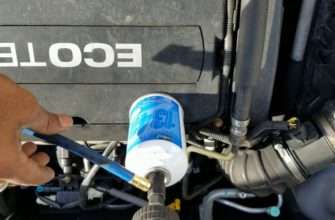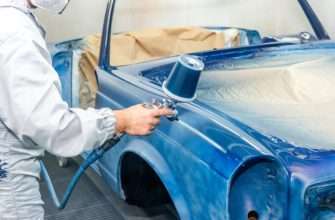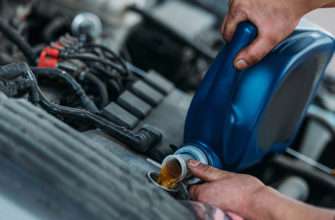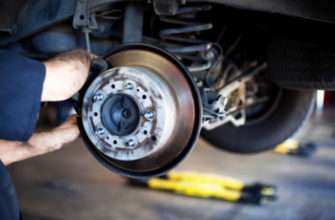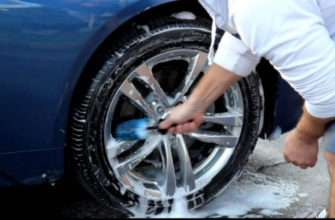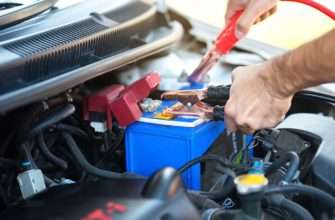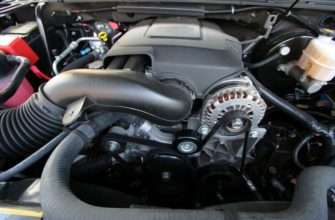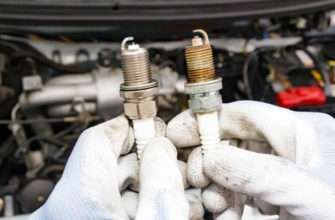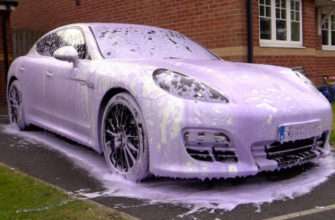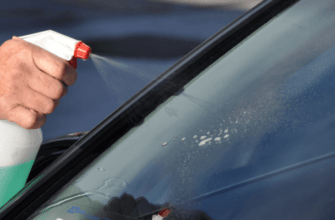There are few things as frustrating as heading out of the door on a cold winter day and your car keeps clicking but just won’t start because the battery is dead.
It’s Murphy’s law in action: you will rarely experience a dead battery in the summer when you have plenty of free time, but count on it to fail at the worst possible moment on the coldest day of the year, and that’s because winter is often the time when fatigue catches up with older batteries as they near the end of their life.
Standard lead-acid batteries that come as original equipment on most cars have an estimated service life of about five years. These batteries usually reach or edge closer to the end of their life under extreme weather conditions – either hot or most often cold. I’ve had two batteries fail in the dead of winter when it was minus 15 degrees Celsius.
However, it’s not all doom ‘n gloom if you are able to safely boost the car battery, like I did with mine, and have it checked by a mechanic. This guide will help answer the question “how can I boost my car battery” and explain how to safely boost a discharged car battery.
For the very first step you need to jumpstart the car:
How to jumpstart a car with a discharged battery
Step 1.
To get a car with a discharged battery up and running from a good (donor) battery, you’ll need to park both vehicles close but not touching each other. The donor vehicle doesn’t have to be running during this process because it could cause an electrical surge while the cables are connected which could result in damages that may cost thousands of dollars to fix. Better safe than sorry.
Step 2.
Open the hood of both cars and locate the battery terminals, which are often protected by a plastic cover. Open the cover to gain access to the terminals and if there’s corrosion on the battery terminals clear it with a rag.
For safety reasons do not attempt a jump start on a damaged or leaking battery as this could cause a spark or fire. If you’re working with an older vehicle with a battery located in the trunk or under a seat, you should be able to find a red plastic cover in the engine compartment that has a positive (+) label. The purpose of this is for you to make the positive booster connection.
Step 3.
Using a heavy-duty 2-gauge or 4-gauge booster cables, connect the batteries in the following order: start the connection by securing the clamp on the positive (red) terminal of the dead battery. Next, connect the other positive end of the clamp to the positive terminal on the donor battery. Positive to positive.
After securing the clamp to the positive of the good battery, connect the negative (black) clamp to the negative (-) terminal of the good battery. Finally, connect the other end of the negative clamp to an exposed and coat-free metal part of the engine block on the dead car. Some vehicle manufacturers make provision for a designated negative (-) ground spots in the engine bay.
Why didn’t we just connect to the terminals of both batteries?
That’s because when a lead-acid battery discharges, the acid breaks down and gives off hydrogen gas. A dead battery will emit hydrogen gas that could ignite if the clamp slips and a spark is released.
Make sure to clear the cable from moving parts in the engine bay (such as belts and radiator fan) so the booster cables don’t get tangled and possibly damaged when the engine starts. Be sure to wear gloves and a face mask or safety goggles to protect yourself from accidents.
Step 4.
Now that the circuit is complete, wait for a couple of minutes for some energy to transfer from the good battery to the discharged one, then make sure all the accessories in the car are turned off before starting the car to minimize the power load. Once the engine is running, disconnect the booster cables in the reverse order: detach the negative off of the boosted car then the helper car, do the same with the positive cable.
Step 5.
Let the boosted car run for at least ten minutes to pump more juice into the battery before driving off. The helper car can run for 5 minutes or more depending on how long it took to boost the drained battery. If the boosted car doesn’t restart after idling for some time, then you need to find out what is draining your battery or get the battery, alternator and electrical system checked by a mechanic.
Some advice before you try to boost the battery
- Make sure there’s a gap between both vehicles.
- Inspect the dead battery to ensure it is not frozen. If the walls of the battery are bubbled or rippled, do not perform the boost. A frozen battery is very likely to explode without notice and since it can’t hold a charge anymore, it’ll put a strain on the alternator and electrical system which may cause premature wear of the alternator or blow a fuse or two.
- In the course of performing its duty, a battery releases hydrogen which is an explosive gas. Make sure you are working in a ventilated environment. Watch out for spark and keep any open flame far away.
- Batteries are encased in tough plastic which makes it very uncommon for a battery to leak, but if you spot a leak then you need to avoid any contact between the battery electrolyte and any part of your body or clothing. Battery electrolyte is a very strong and corrosive solution that can cause severe damage to the skin. If some of the electrolytes get on your skin rinse the area immediately with water and seek medical attention.
- Turn off all electrical accessories such as heating, air conditioning, defroster, GPS, etc. and engage the parking brake.
The better alternative
If the option is available, the alternative/better way to boost a car battery is with the help of a booster pack. You can get a booster pack at an automotive retail store from $50 or more.
Using a booster pack is quite simple:
Plug the booster pack into a power outlet socket, then connect the positive (red) clamp to the positive terminal on the battery and then negative clamp goes to a bare metal part on the engine block. Now flip the power switch on the booster pack then wait a couple of minutes for it to replenish the energy in the battery before you start the car.
This option is safer as it doesn’t need a donor battery and has less room for errors.
If the Jump-Start Fails
If the charge boost fails to get your car started after a couple of attempts, or if the engine starts but then dies again, then you have other issues that need to be addressed. Since batteries have an approximate service time of 4-6 years, you should consider getting a replacement battery if yours is closer to, or older than 4 years. If the battery is new and should be working well, you need to consider other possible problems including:
- Fuses
- Faulty alternator
- Corrosion on the battery terminal
- Ignition switch
- Starter connection
When you find out what the problem is, your best bet is to take the car to your local repair center for service checks and repairs. Many centers offer free battery diagnostic scans and inspections and can help you understand what the issue is as well as how to extend the lifespan of your battery.
What if Your Car Battery Won’t Hold a Charge, or Keeps Dying?
Let’s assume for a moment that you successfully boost charged your car battery, and can make it to your destination. Unfortunately, the next time you try to start your car, you experience the very same problem you thought you had fixed – clicks, sputters, all symptoms of a dead battery.
If your battery ‘dies’ on you like that, what this simply means is that it wasn’t able to hold its charge the first time. There are several causes to consider.
The Causes of a Failed Boost Charge
You’ll need to investigate why your battery isn’t holding a charge, some of the most common reasons include:
- You left your lights on – or other accessories that draw power from the battery – even when the engine wasn’t running.
- The battery wasn’t charging while you were driving. This is a mechanical issue, and you need to get it fixed by a mechanic to prevent further damage.
- You probably didn’t drive the car around long enough after you boosted the battery. It’s important that you let the car idle for a few minutes to charge the battery or drive around town for a minimum of 20 minutes.
- There is a parasitic electrical drain on your battery. If you have amplifiers, subwoofers, and other electrical components, make sure they are wired in such a way that power supply is cut short when you turn off the ignition. Even when in idle mode, many electrical components draw enough power to kill a battery.
- The battery is done. If your battery is very old or has survived a faulty alternator, and is no longer capable of holding a charge for very long, then the long-term solution is a new battery.
This list isn’t exhaustive, there are many unlisted potential causes of your battery woes, but these are the most likely causes.
Diagnosing the Problem
Here are a few troubleshooting tips to help you figure out which of these scenarios you’re dealing with:
Step 1.
Turn on your car headlights. If they come on and are as bright as they normally are, then it’s likely that your problem is a bad starter, poor wiring, or a broken fuse – not the battery itself. If the lights are dimmer than normal or do not come on at all, then the problem is from the battery.
Step 2.
Next, take a voltmeter and test the voltage reading of your battery. Connect the black lead to the negative terminal and the red lead to the positive terminal. You should get a reading over 1.5 volts, showing a fully charged battery, but if it’s lower than that, then the battery isn’t charging properly.
Step 3.
Now, consider the overall condition of the battery itself. Does it look obviously worn out or corroded? Have you used it for more than four years? If so, then you might as well save yourself the stress and get a new battery.
Step 4.
Finally, consider whether the problem lies with your alternator. If you detect fraying or cracking in the alternator cable, or perceive a burning smell from the alternator, that’s an obvious sign your alternator might be faulty.
These are effective ways to figure out what’s wrong with your electrical system and why your battery isn’t holding a charge, but what if the car won’t jump start even with a healthy donor battery?
Why Won’t Your Engine Jumpstart?
If all efforts to jumpstart the engine proved abortive, it could possibly be from one of these reasons:
- It might be that your battery terminals need some deep cleaning.
- Maybe your battery has failed completely and is now a dead load on the electrical system — in which case, of course, it will need to be replaced.
- Finally, it could be a mechanical problem such as a faulty starter, or maybe a fuse has blown somewhere.
Final Thoughts
Dealing with a dead car battery is an annoying and nerve-racking experience. Luckily, getting your car up and running isn’t that difficult. By following these instructions, safely using your jumper cables, practicing safety and addressing other potential issues, your car will run safer, better, and last longer.


